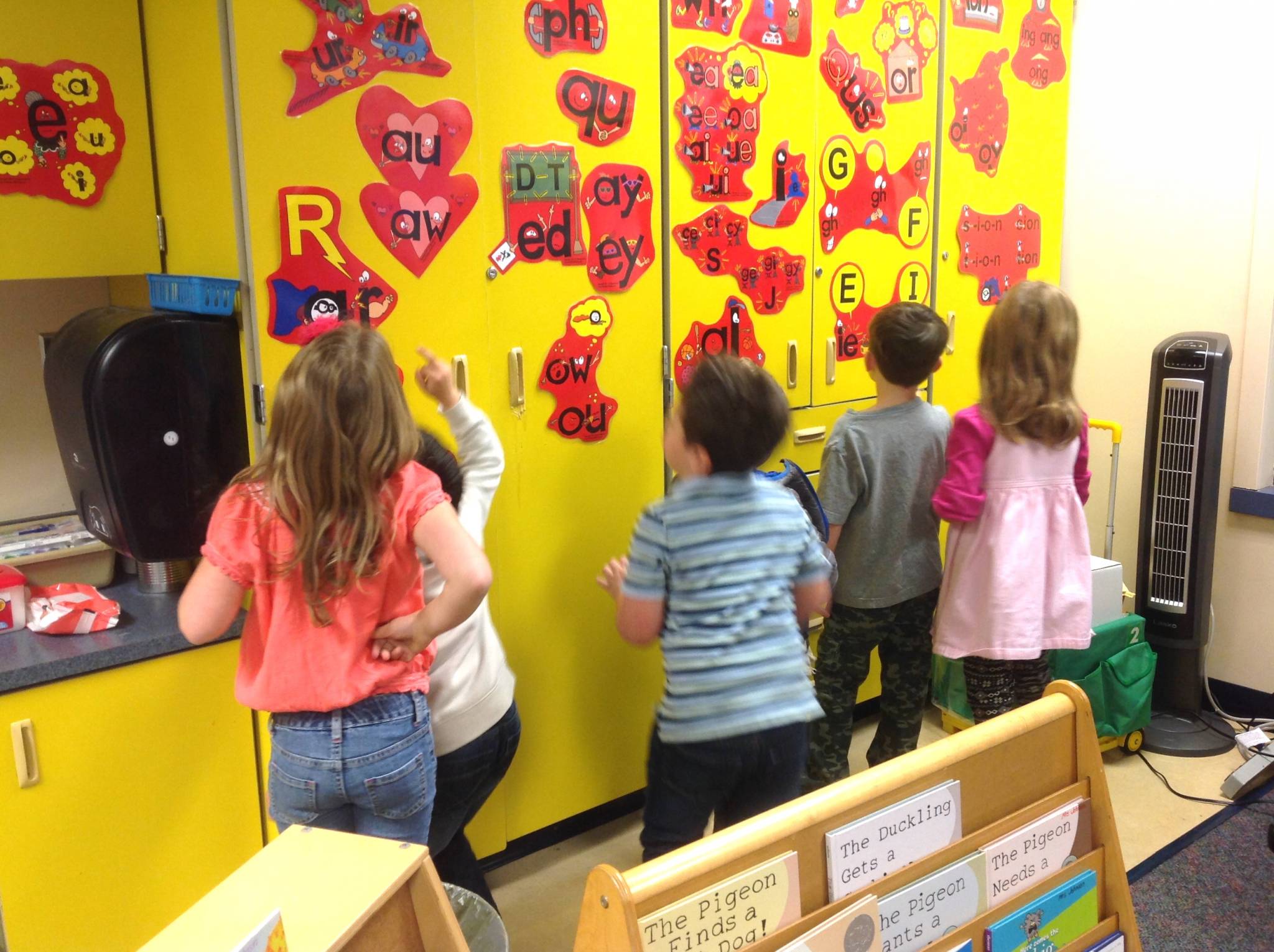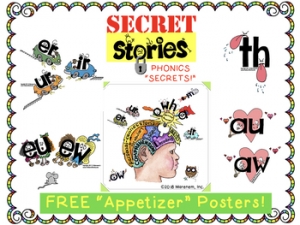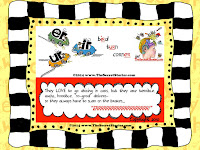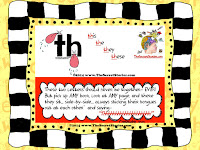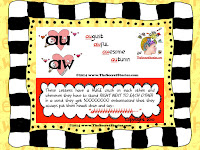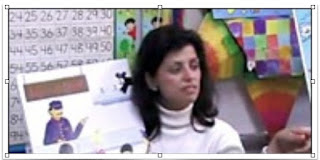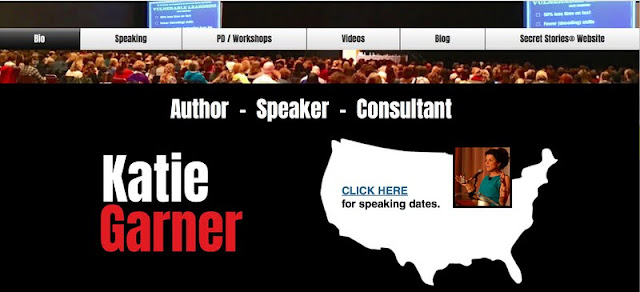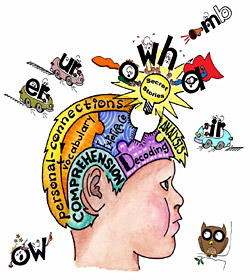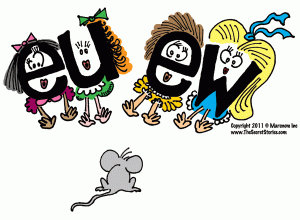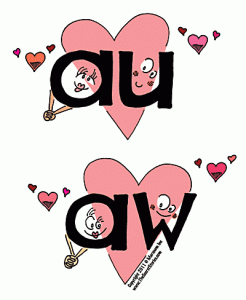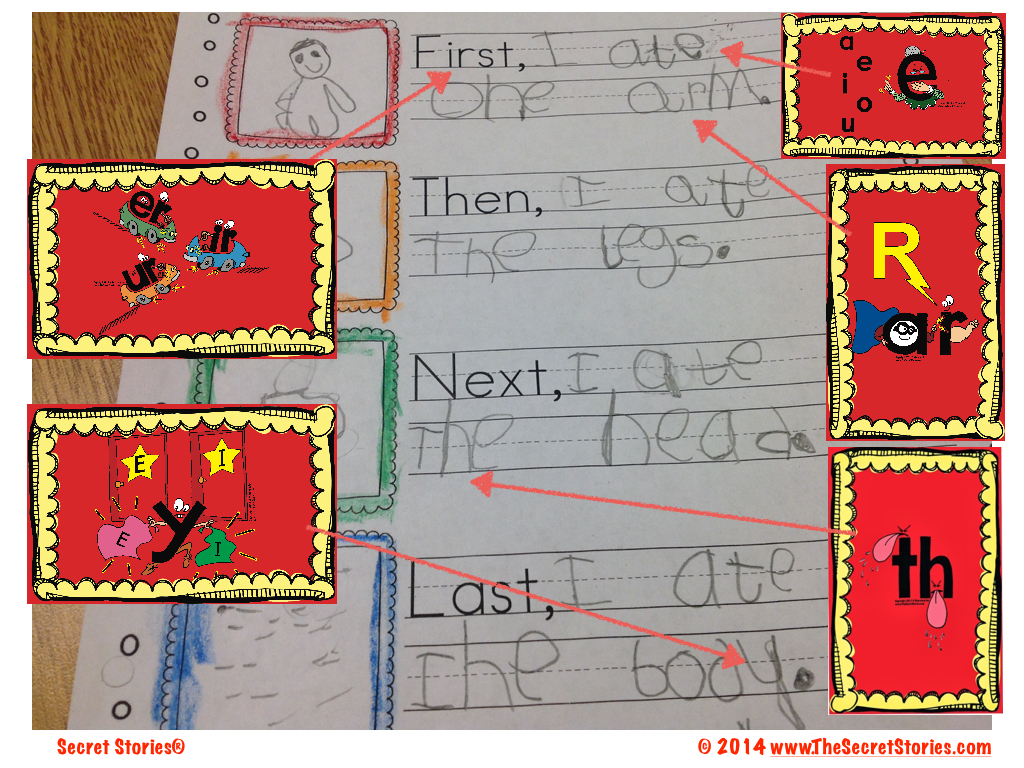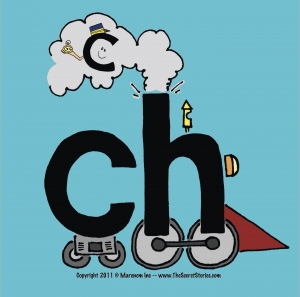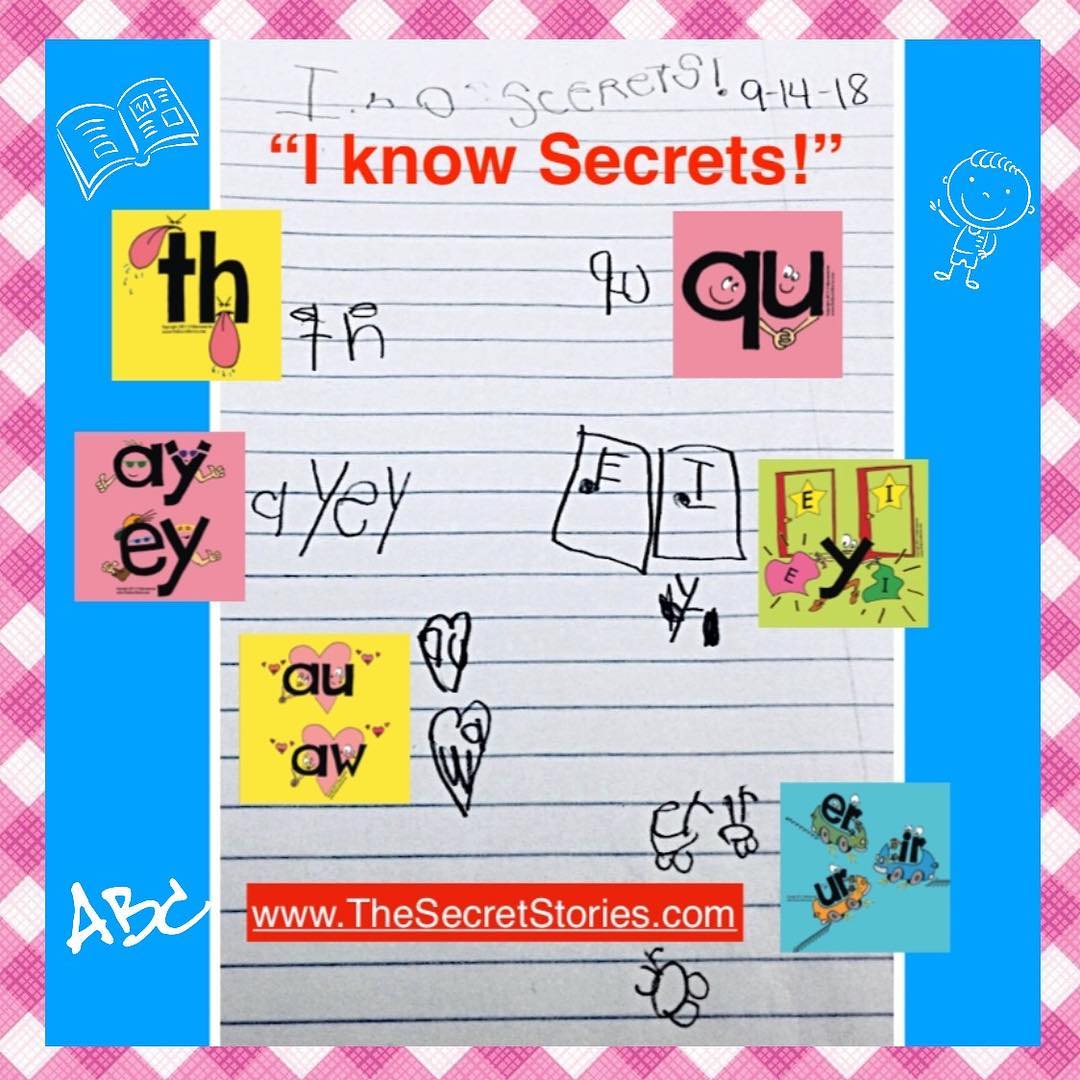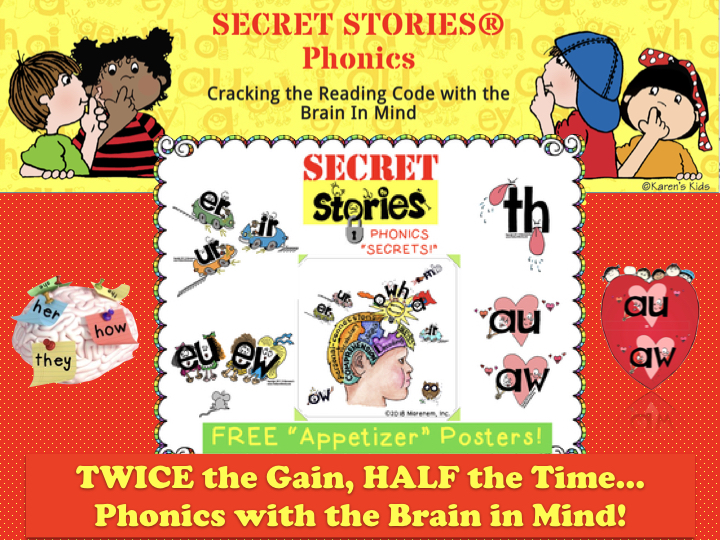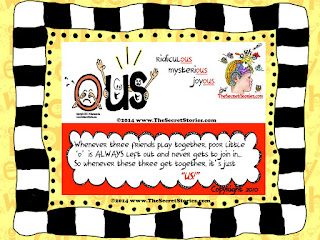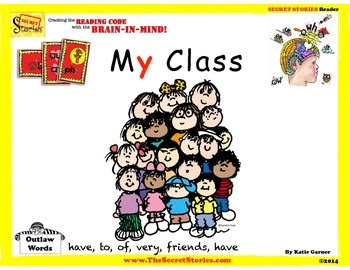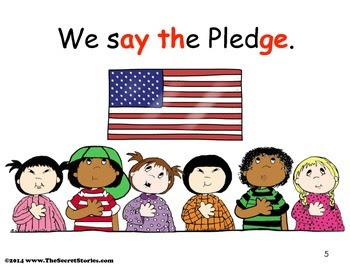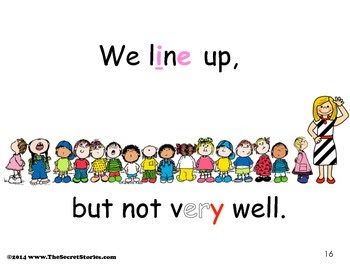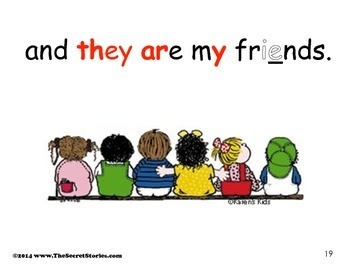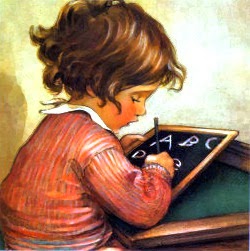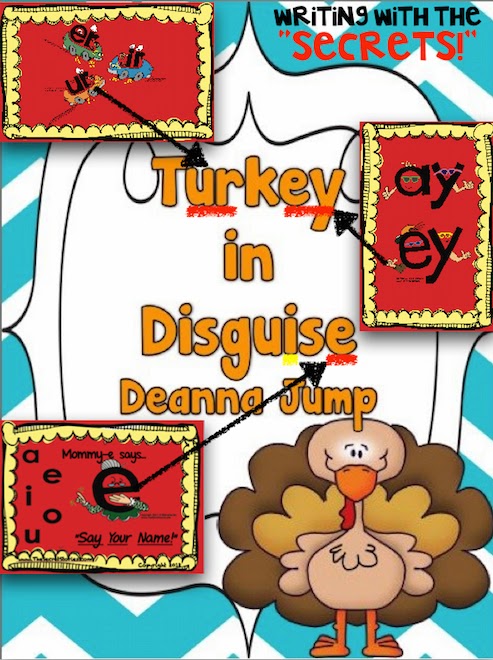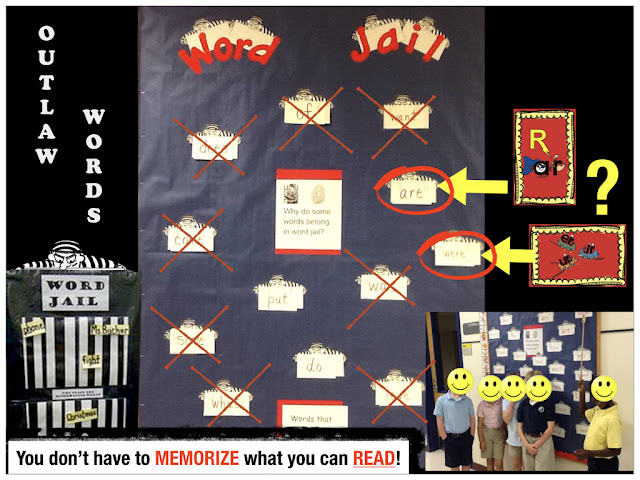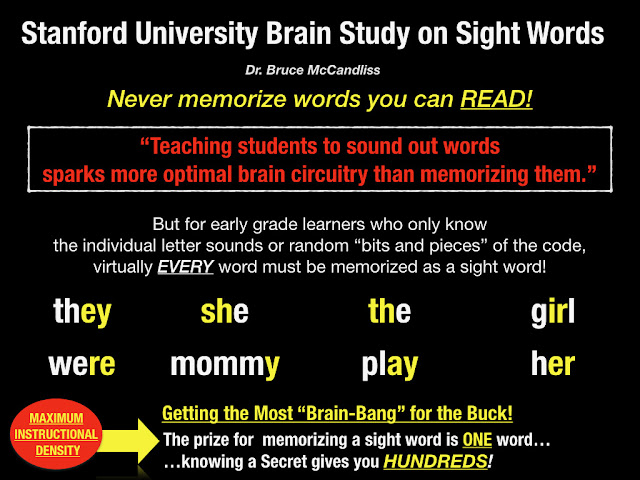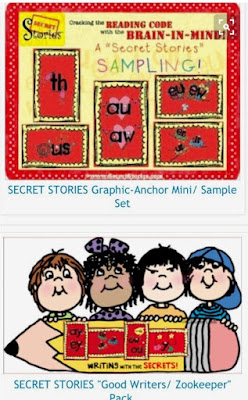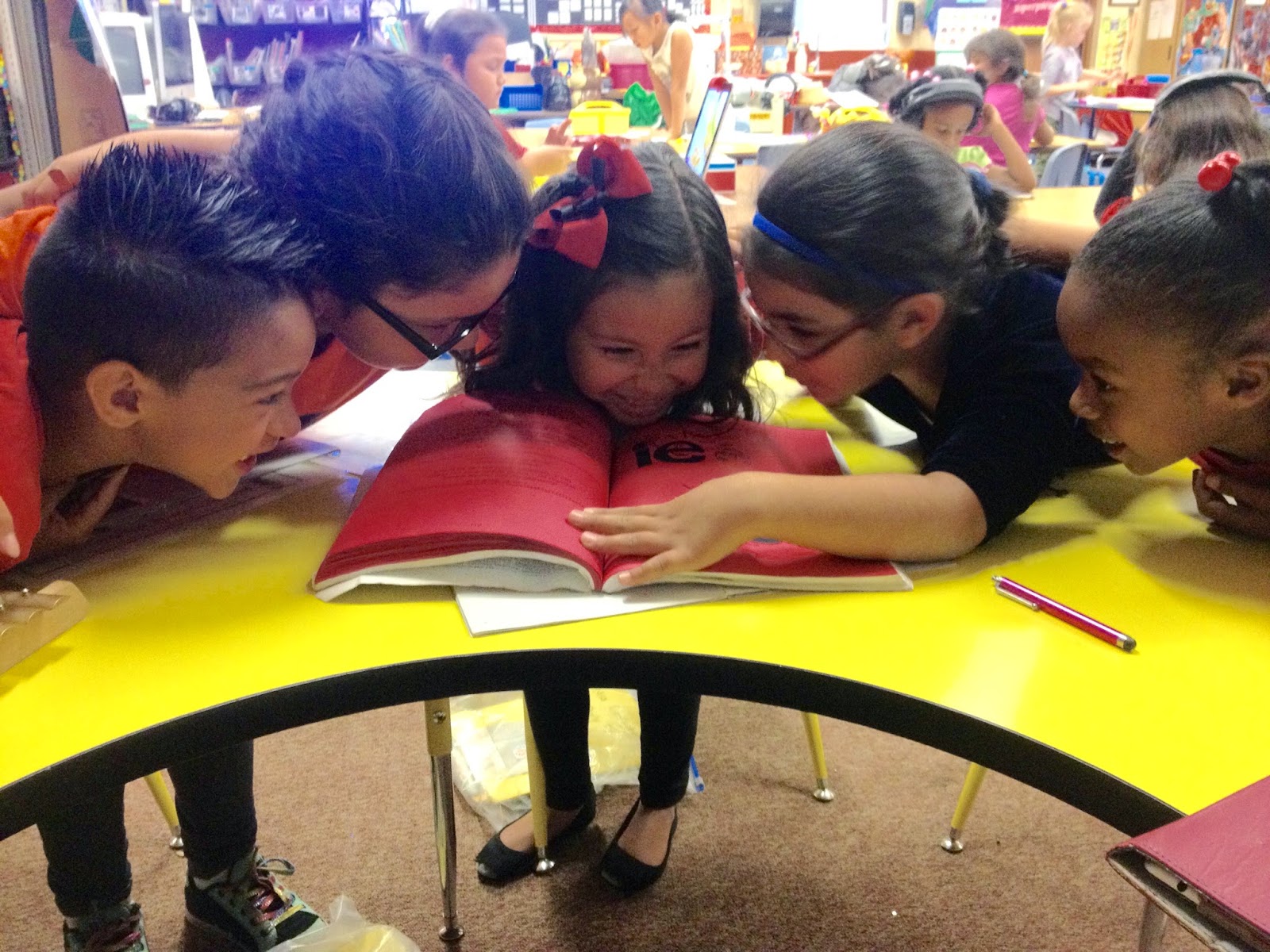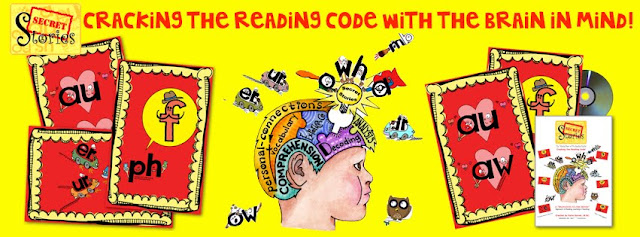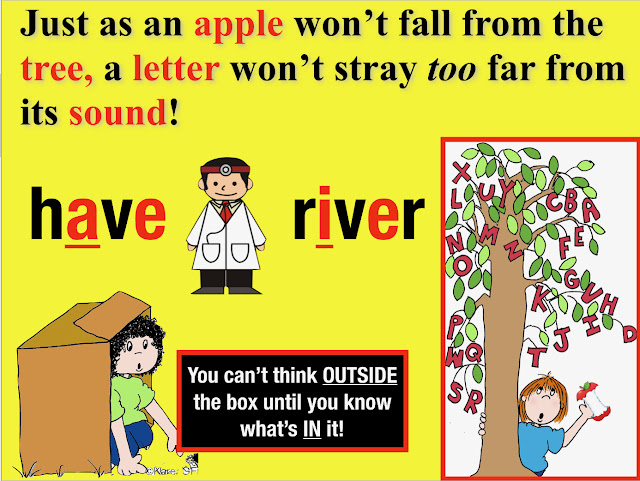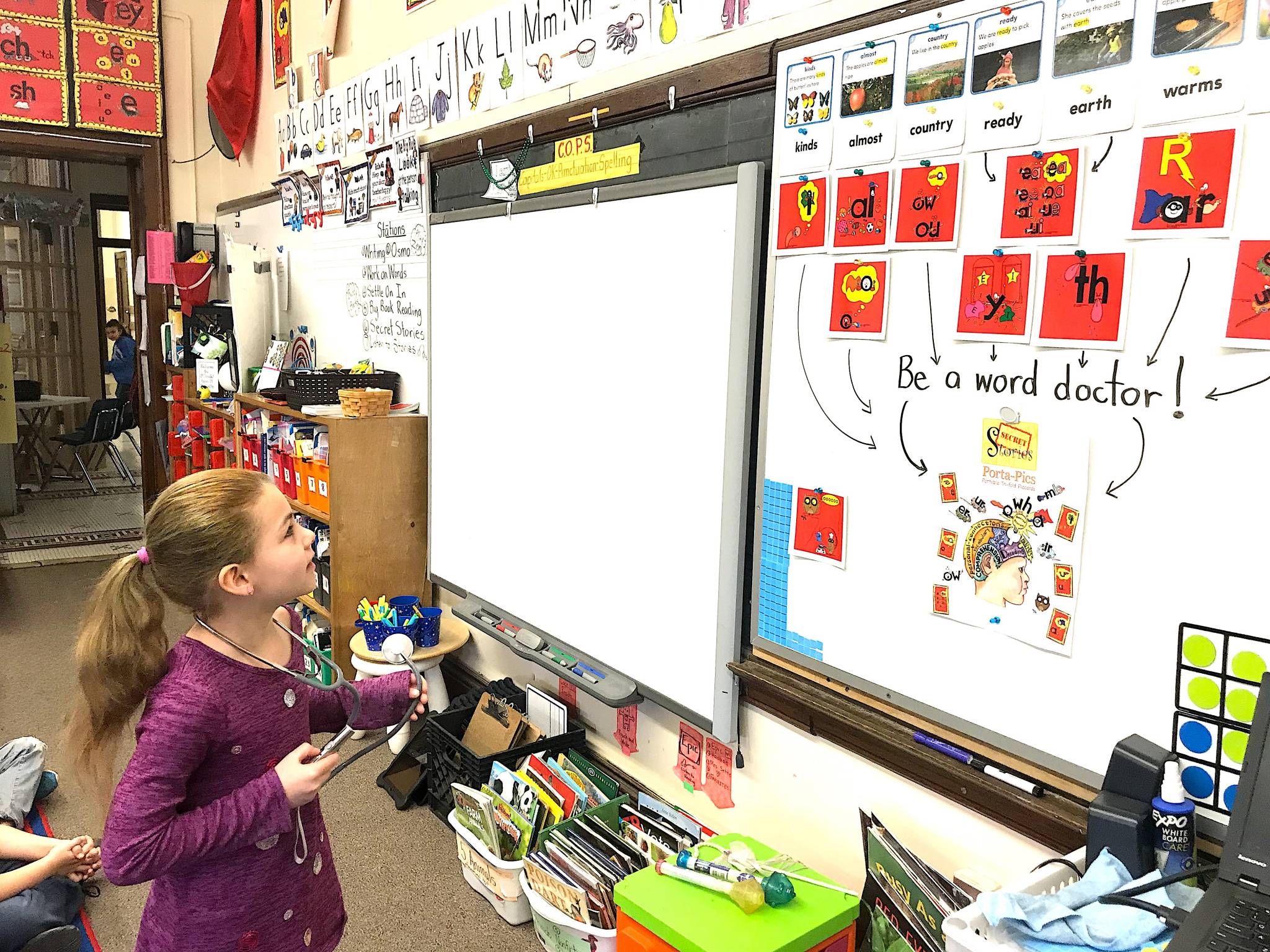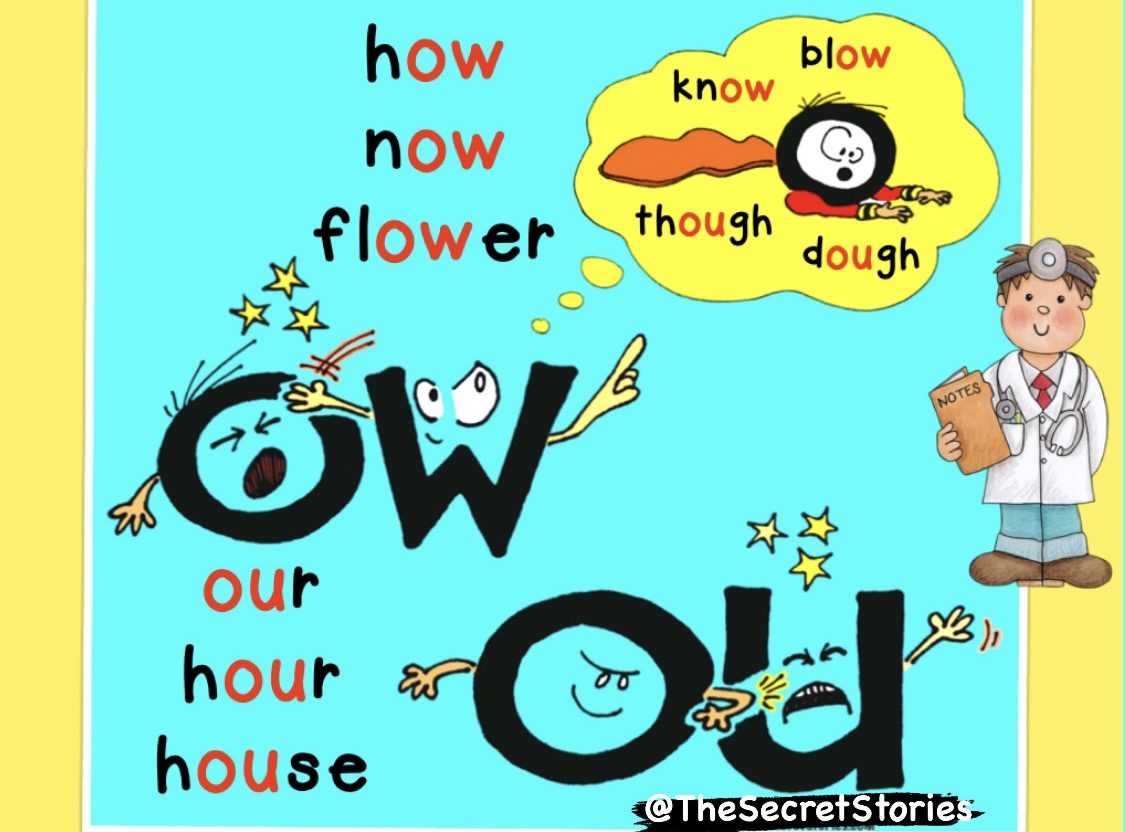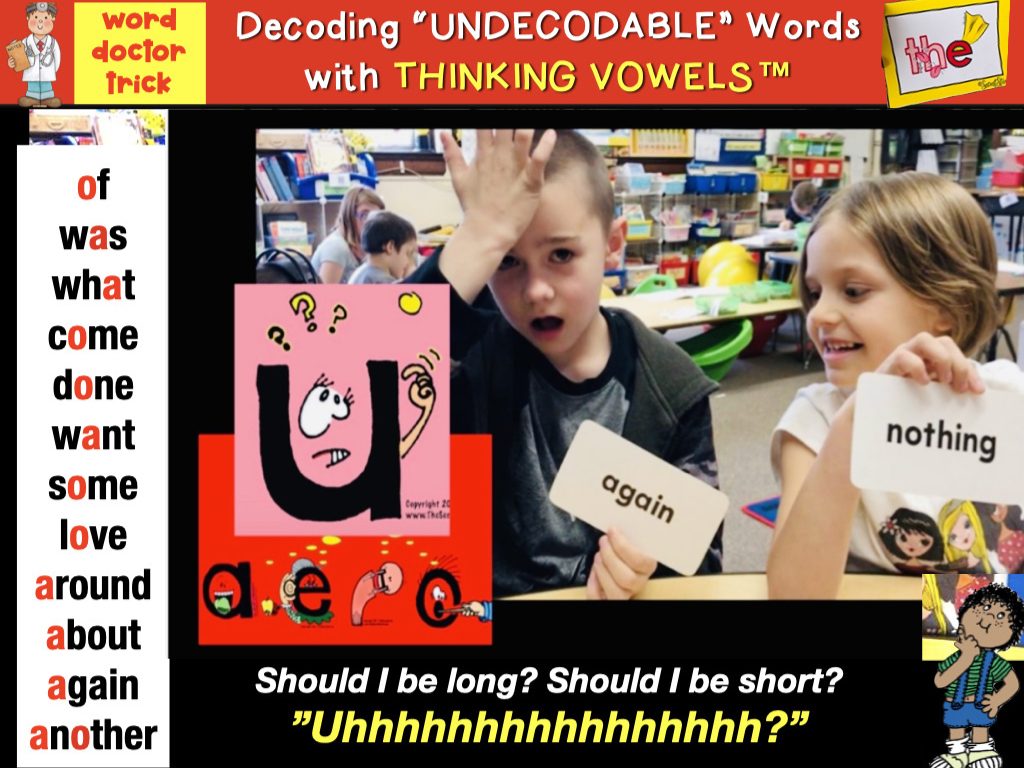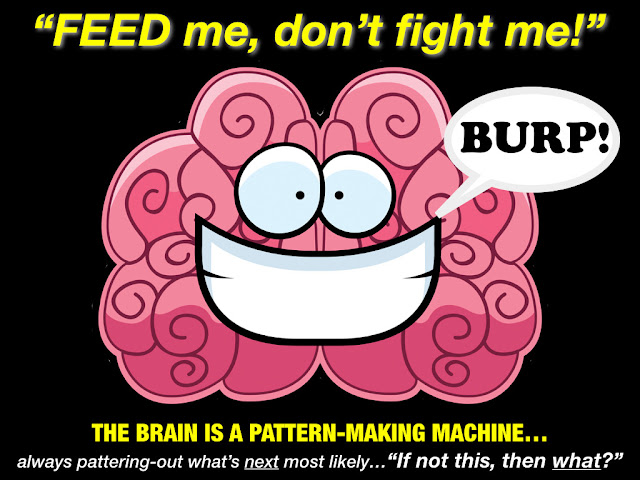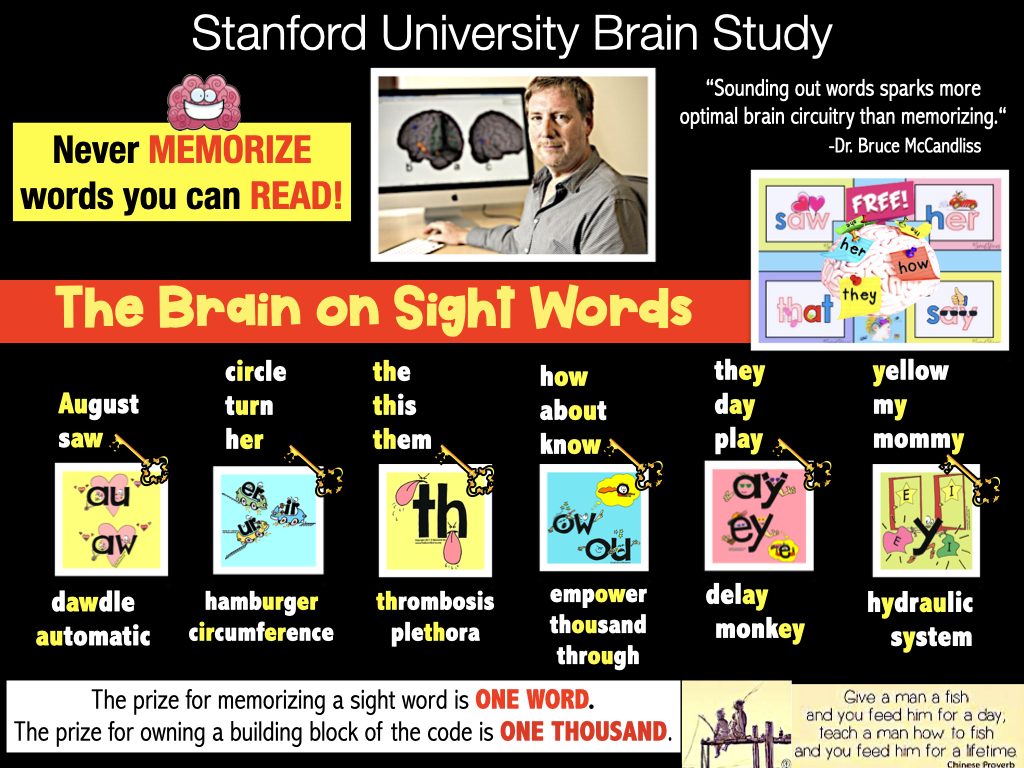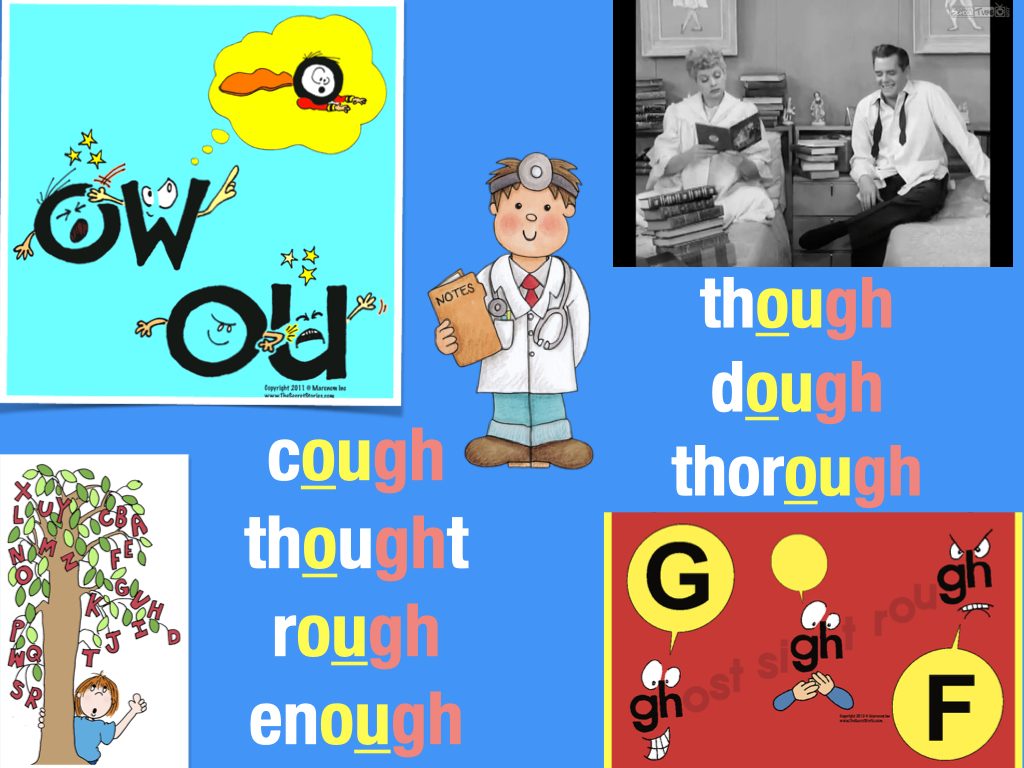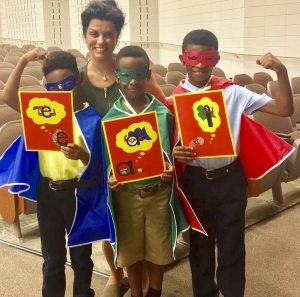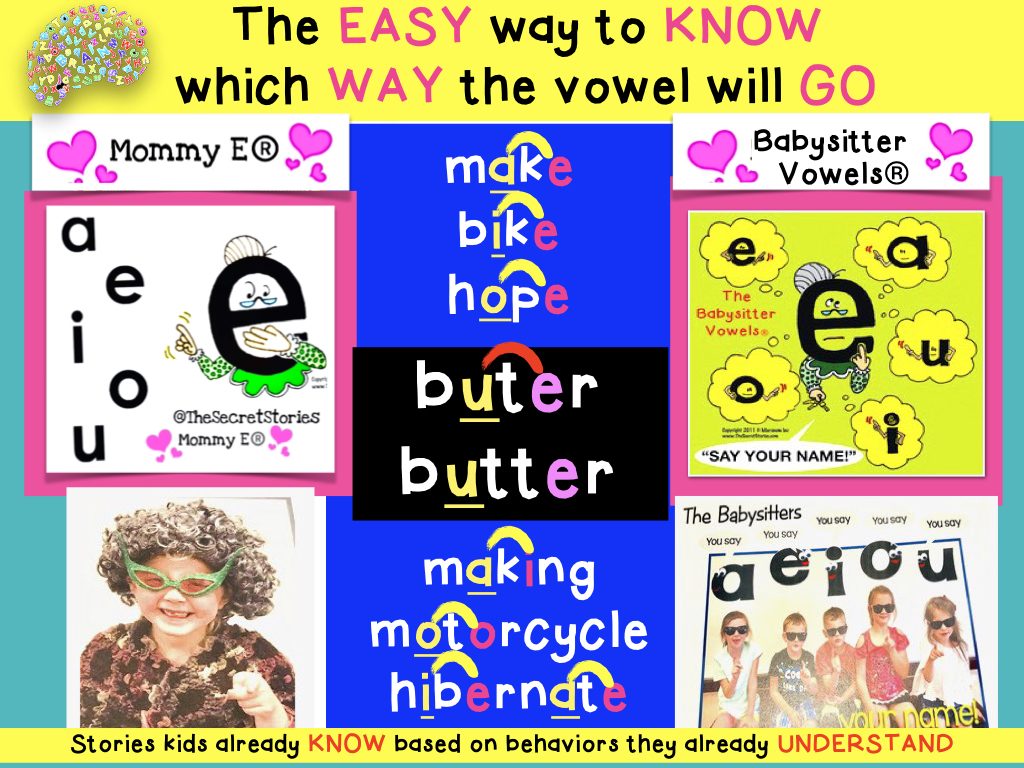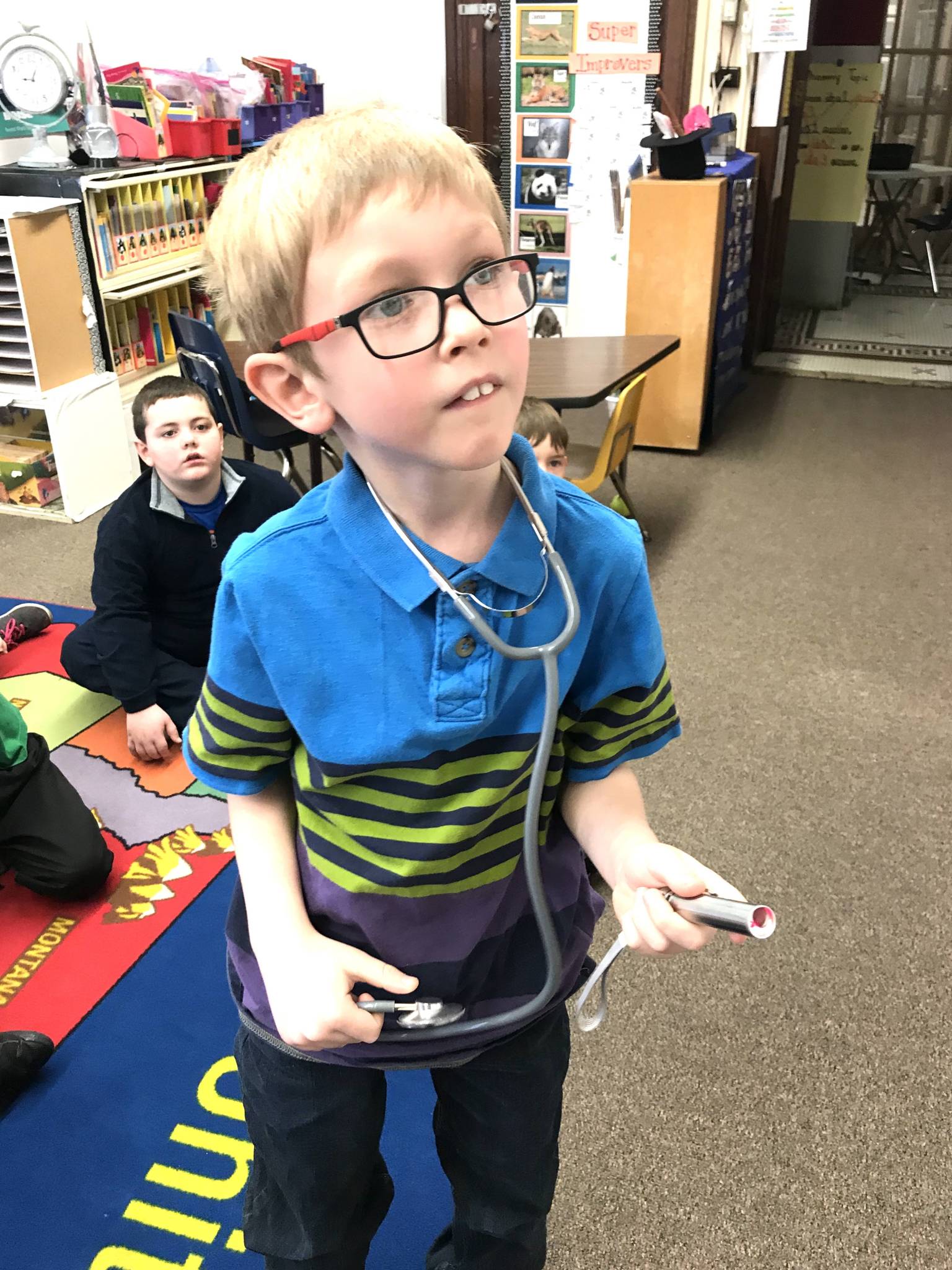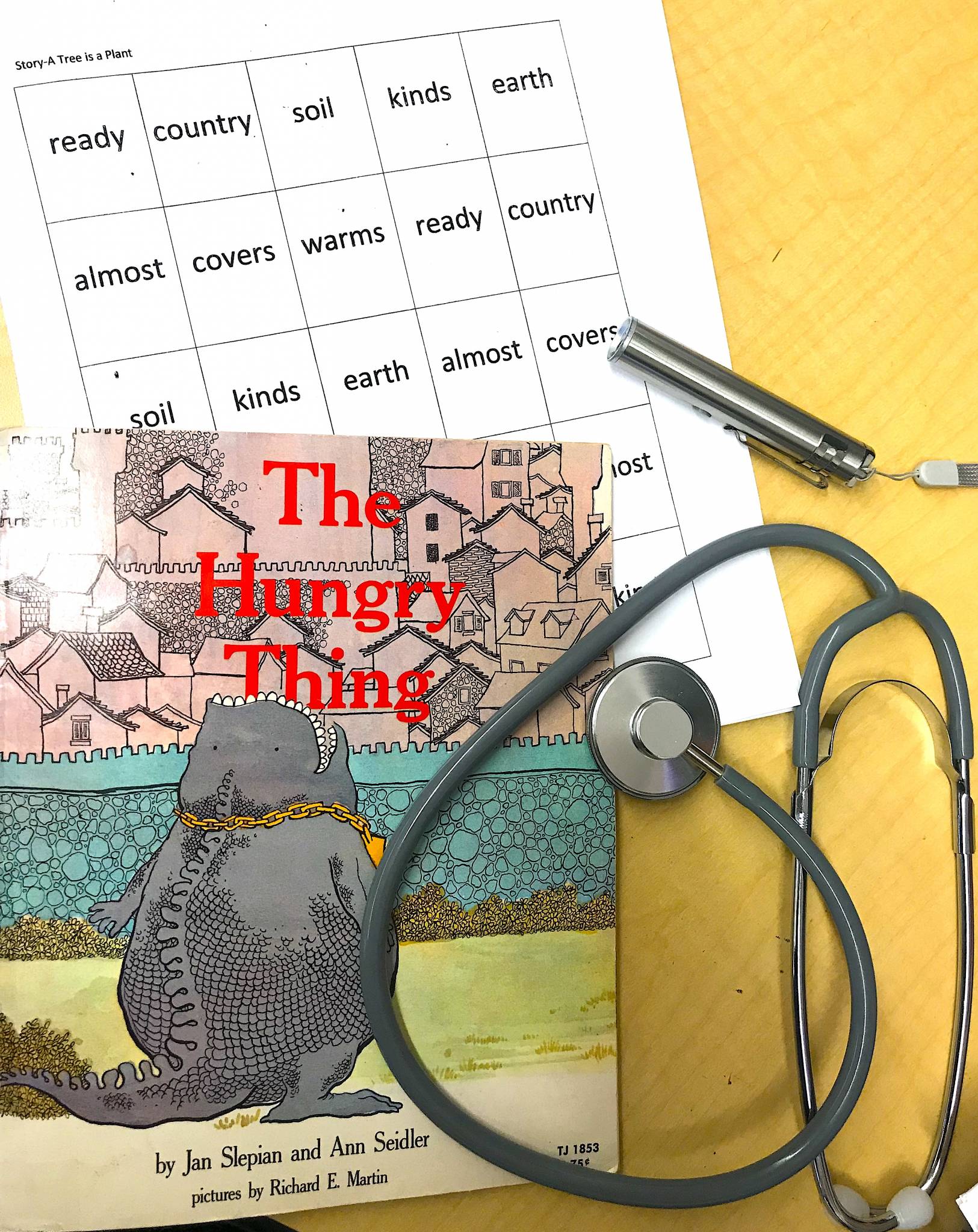It Takes More Than Individual Letter Sounds to Read and Write!
These 6 kids were engrossed in telling the Secrets (and trying to figure out the ones we haven’t learned yet!) The little guy in the stripes has become our unofficial “Word Jail Warden!” He can spot an ‘Outlaw Word’ a mile away! We will start ‘paroling’ some of them soon!”
Kjersti Johnson- Kindergarten Teacher
Phonics on Steroids: “Warp-Speed” Access
to the Reading & Writing Code in Kindergarten!
As teachers, I think we have all had that moment when we sit down with one of our students and they completely knock our socks off! This post is all about one of those moments.
Yesterday, I had just gotten my afternoon class of kindergartners settled into our Dailies….they were spread around the room, some reading, some writing, some listening to books on iPod shuffles, and a few shopping for new books.
I looked around to see who I would confer with (one of my favorite times of the day, by the way!) I started with Abel.
Now let me tell you about a little kindergartner named Abel.
He is one of the sweetest little guys I know. He has an amazing smile, and he is also VERY excited about learning!
He is an English Language Learner who entered kindergarten knowing 7 letters and 0 sounds. He worked SO hard the first weeks of school to learn his ABC’s and by October, he knew ALL 52 upper and lowercase letters! (the Better Alphabet Song was a huge success!)
So back to yesterday……
I sat down next to him and asked him to read to me. That’s when he pulled out Arthur’s Halloween.
I looked at him and said, “Oh, this looks like a great picture read. Can you tell me a story to go with the pictures?” This is kindergarten after all, and it’s a tough book! He gave me a strange look, and then…….He was READING it!
Later in the day, I had him read it again so that I could video it, and here he is reading Marc Brown’s Arthur’s Halloween.
ELL Kindergarten in October—”Spotting Secrets” in Arthur’s Halloween
“Was” …..?
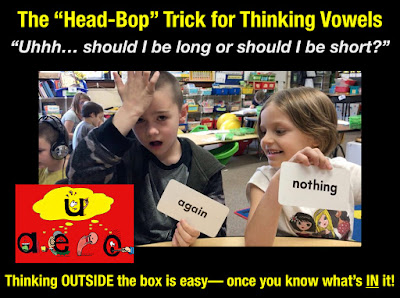 |
| Secret Stories® Phonics Head-Bop Trick for Fickle Vowels |
“Night”….with its tricky /gh/?
Got it!
 |
| Secret Stories Phonics Secret— Positional Sounds of gh |
“Before” ….?
Didn’t stump him. He saw that Babysitter Vowel® o telling e to say its name! He also spotted /o/ and /r/ who can “never make up their minds when they get together,” and read it like a pro!
“Family” ….?
That Sneaky y® didn’t trick him!
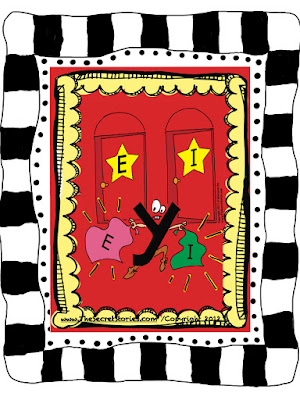 |
| Sneaky Y® Phonics Secret |
Then we got to “making”…. and guess who was able to use the Babysitter Vowels® Secret to figure out whether /a/ would be long or short?!
He knew it wasn’t right when he first read it, but then he remembered the Secret! (and please excuse me telling another student, TWICE, to go color their work! ;-)
 |
| Secret Stories Babysitter Vowels®— How to Know Whether a Vowel Will Be Long or Short? |
“House”….?
Rough-housing /ou/ and /ow/ saying “Owwwww!” No worries.
 |
| Secret Stories® Phonics ou/ow Secret! |
“Look and spooky”….?
Knowing the Secret, he switched sounds for /oo/ like a pro!
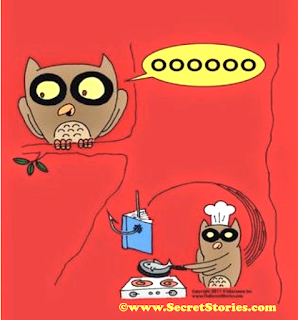 |
| Secret Stories® Phonics /oo/ Secret |
I was BLOWN away! And so I made poor Abel read that page to everyone I could find! I was so proud of him! (and by the way, he is determined to read the whole book now, and I have no doubt that he will!)
This morning, I shared the video with my principal, our Dean of Students, and our LAP teacher. The question of how and when I use the Secret Stories in my class came up, and I thought to myself, “When don’t I use them???”
The Secrets aren’t limited just to “reading” time. We use them ALL DAY LONG, which in half-day kindergarten, is only about 2 hours and 40 minutes. (Oh, did I forget to mention that I teach half-day kinder?!) That’s not very long, which is why getting the most bang for the buck in the short amount of time we have is critical. Secret Stories® makes what used to seem impossible EASY! (It’s like phonics on steroids!)
Literally not a moment that goes by that the kids aren’t spotting Secrets.
We look for Secrets in our poems…..
We use yellow and blue for “popcorn” words. We “butter” the new ones and put blue dots under the ones that we already know. Then we use a green highlighter to find Secrets.
And honestly, I have to say, now that the kids know the Secrets, I spend almost no time at all on memorizing sight words, except for the small handful that really break the rules and have to go to jail, as most of the words the kids can just read.
We look for Secrets in Science….
Look at the picture above to see how many variations of the word hibernate we found when reading our big book in our whole group Science lesson! One of the kids spotted the er Secret, then another spotted the /or/ and /ing/ Secrets, and we were off! Next came the Babysitter Vowels®, which they used to help them figure out whether the vowels would be long or short. Some students knew the Secret sounds immediately, and others had to check the posters first before sounding out each part, but they were all able to read all of the words— and write them!
No one was left out of the reading and writing fun because we all had one thing in common— we all knew the Secrets! That day, we did more reading and writing in Science than in our designated reading and writing blocks, combined! What better way is there to show beginning learners what these Secret skills are actually for!
My favorite thing is what happened the following day when I was working with a small group and heard Abel yell from his seat across the room, “Mrs. Johnson! Mrs. Johnson! Look, I found the word hibernate in my book!”
And sure enough, he had.
Even for an ELL Kindergartner in October, sounding out the word hibernate with the Mommy E® was easy!
We use Secrets when we write…..
See the /ow/ and /ing/ in snowing and the /ou/ in mountains!
| We look for Secrets when we read the directions on our math papers. |
Words like draw and count with the “letters who love each other” (au/aw) and the “letters who don’t” (ou/ow) can’t fool us!
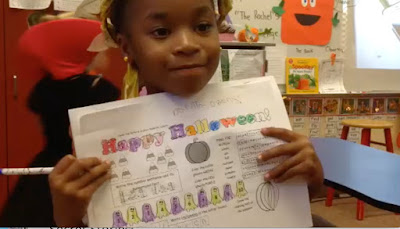 |
| Spotting Secret Stories® in Math! |
| As usual, ou & ow are not getting along! |
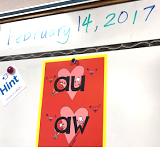 |
| The “anniversary” of au & aw Valentine’s Day! |
I almost never have to read the math story problems to my kids anymore because they can do it all by themselves using our Secrets!
Secret Stories® has opened up so many possibilities…..there seems to be no limit to what my kindergartners can do. It has really changed everything.
And while I do still have kids that are just chugging along at their own pace, like sweet little Abel, they are ALL sucking up the Secrets— even those who are not always ready to apply them. And that’s okay, because I know they have the “keys” in their pocket that they will need to unlock the words they want when they are ready, just like Abel did.
| Transforming letters and sounds from skills they have to learn into Secrets they want to know! |
Thank you, Kjersti!
I can’t thank Kjersti enough for that deep dive into all of the wonderful things that she’s doing in her kindergarten classroom. I will be doing a part 2 “follow-up” to Kjersti’s post, so stay tuned! (You can catch another post by Kjertsti here!)
And if you haven’t tried the Secrets but would like to try sharing then with YOUR kiddos, you can download this mini-poster “appetizer” anchor pack FREE!
For a list of upcoming conferences, or for information on scheduling a school or district professional development workshop, click here.

